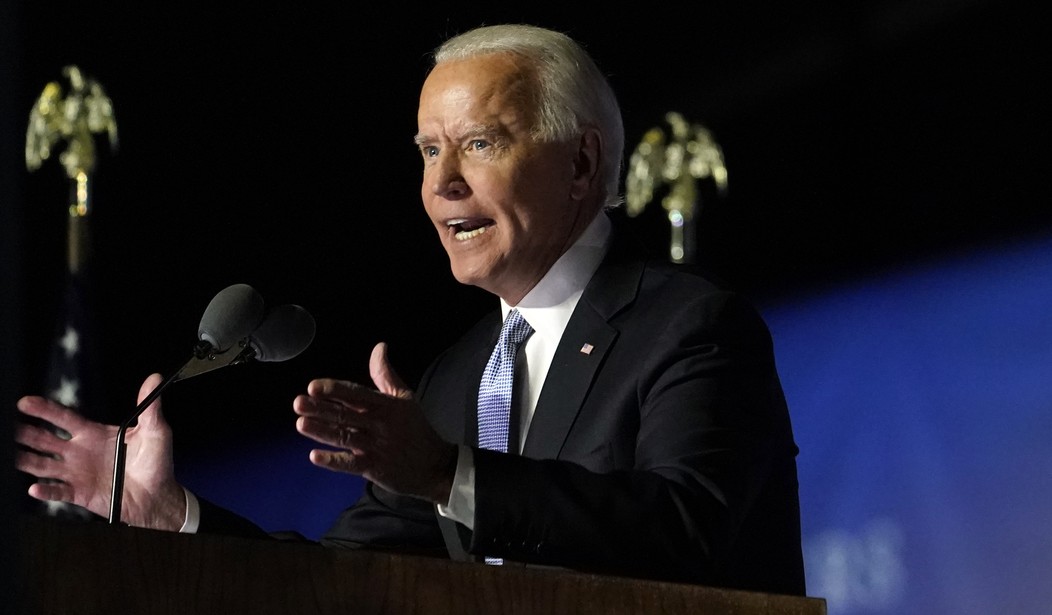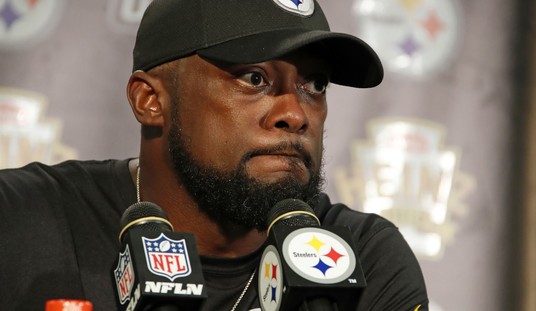Contrary to my more skeptical friends, I believe in the efficacy of masks and social distancing. Face masks do not primarily protect the wearer, but they do make it less likely that the wearer might unwittingly infect others. Social distancing also likely mitigates the spread of the Wuhan coronavirus pandemic. I even think that lockdowns may help restrict that spread. However, when it comes to public policy, slowing the spread of COVID-19 must be weighed against other important interests — including other health concerns — and many policies simply don’t make the cut.
Yet governors like Gavin Newsom (D-Calif.), Gretchen Whitmer (D-Mich.), and even Mike DeWine (R-Ohio) have issued new lockdown-lite orders, while Joe Biden’s coronavirus task force is calling for a new round of lockdowns harsher than the March versions.
While the legacy media seems obsessed with the pandemic and with breathlessly reporting every new “benchmark” in terms of cases and deaths, COVID-19 is merely one of many important concerns public officials must balance when making policy decisions, and if they focus myopically on the virus, they may devastate other parts of society.
For example, schools across the country have been shuttered, forcing children to attend “class” online. While this may allow parents to finally see what schools are teaching their kids — a positive side-effect — it also means parents have to baby-sit their young children during the hours when the kids would normally be at school. This may not be too difficult for teenagers, but elementary school kids need their recess and won’t be satisfied to stare at a screen all day.
Even a UNICEF report recently argued that the costs of closing schools outweigh the health benefits.
Yet many political leaders — mostly but not all Democrats — have insisted on following the “science” to the exclusion of all other concerns. By this, it seems they mean Americans must listen to epidemiologists and restructure their entire lives around the goal of restricting the spread of the coronavirus pandemic.
The breathless media coverage makes it seem like this is the self-evident path forward. As of Saturday, the U.S. has a reported 12 million cases and 254,000 deaths.
Yet these statistics may be misleading. Not only does not everyone who tests positive contract COVID-19 symptoms — much less a serious case of the disease — but the COVID-19 death count may also be inflated. The disease is most deadly for the elderly and those with comorbidities, meaning that COVID-19 may have been a contributing factor to their deaths, but it did not kill them on its own.
None of this is to say that the coronavirus pandemic is not serious or deadly — it most certainly is. People of all ages and health conditions have also died from the disease. However, death rates for the young and healthy are extremely small.
Furthermore, while 12 million cases and 250,000 deaths may sound horrific, America has approximately 330 million people. Every year, the country experiences 95,000 alcohol-related deaths, 300,000 obesity-related deaths, 655,000 heart disease deaths, and in 2018, 36,560 people died from car accidents.
Should American politicians put daily life on hold and devote the entire focus of the country to preventing obesity deaths? Should they issue a “lockdown” on fatty foods to combat heart disease? How dare you say no, people are dying!
Americans may have a different perspective when they consider the broader picture. Yes, it makes sense to take efforts against the coronavirus pandemic, but the important goal of combatting the virus must be weighed in the balance with other goals.
Many people — often on the Left — claim that those who oppose lockdowns are sacrificing people’s lives for the economy. The economy is an important concern, but lockdowns do not just threaten the economy — they also threaten people’s lives.
According to a study from Just Facts, the anxiety from the media exaggerations of coronavirus lethality and the social-distancing and lockdown measures will cost seven times as many years of life that the lockdowns could potentially save.
Macabre as it may seem, the best medical practices suggest that Americans should weigh health responses in terms of years of life lost or years of life saved. Every human life is precious and every death is a tragedy, but when it comes to weighing different health policies, the loss of the elderly and infirm — who are most likely to contract and die from the coronavirus disease — represent fewer years of life lost than the young and healthy.
Lockdowns breed anxiety, which carries a long-term cost that is difficult to measure. That said, Just Facts compared the years of life lost due to coronavirus anxiety and depression (including anxiety and depression from the lockdowns) and found it a much higher cost than the benefit of years of life saved due to lockdowns.
The threat of coronavirus anxiety and depression has impacted at least 42,873,663 adults and it will rob them of at least 1.3 years of life per person, thus destroying 55.7 million years of life, according to the study.
The effectiveness of lockdowns is extremely difficult to measure, but Just Facts took the highest estimate for potential effectiveness by comparing Sweden’s death rate to the death rate of Finland, a 6.4 ratio back in May. This significantly overstated the effectiveness of lockdowns, since COVID-19 has had second waves in European countries that instituted lockdowns.
Since COVID-19 robs an average of 12 years of life from its victims, the lockdowns could save no more than 7.4 million years of life. Meanwhile, the anxiety and stress of the pandemic will cost 42.9 million Americans an average of 1.3 years of life, thus destroying 55.7 million years of life.
The coronavirus anxiety and stress cost at least 7.5 times more in terms of years of life than the lockdowns could possibly save, even assuming the best about the lockdowns.
While the coronavirus pandemic is deadly and serious, other maladies cost far more in terms of years of life. If 240,000 Americans die from the coronavirus, the virus will destroy about 2.9 million years of life from Americans who were alive at the beginning of 2020. This sounds catastrophic, but the annual influenza robs Americans of roughly 35 million years of life, while suicides destroy about 132 million years of life every year, and accidents destroy 409 million years of life annually.
Every death is tragic, but America does not lock down the economy to fight the flu or to prevent accidents.
Furthermore, it is likely the coronavirus lockdowns contributed to the deadly riots this summer, which proved the most destructive (in terms of insurance claims) in U.S. history. Research suggests that mandated isolation can impact brain patterns, increasing an individual’s stress, aggression, and fear. Increasing stress can lead to depression and even suicide, while increased aggression and fear can lead people to act out against perceived injustice by looting and rioting.
Lockdowns aren’t just a threat to celebrating Thanksgiving or Christmas with the family — they also threaten the economy, may provoke social unrest, and damage long-term health prospects.
I welcome efforts to stop the spread of the virus, but let’s not kid ourselves about the damage some of these efforts can do. Public policy does not take place in a vacuum, and COVID-19 isn’t the only threat Americans face.
Tyler O’Neil is the author of Making Hate Pay: The Corruption of the Southern Poverty Law Center. Follow him on Twitter at @Tyler2ONeil.
Fresh Off Calling for a Nationwide Lockdown, Biden Blames Trump for COVID Lockdowns
Coronavirus Anxiety Costs More Lives Than the Lockdowns Save From COVID-19, Study Finds
The Coronavirus ‘Shadow Pandemic’ Also Costs Lives, and Explains the Riots









